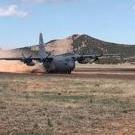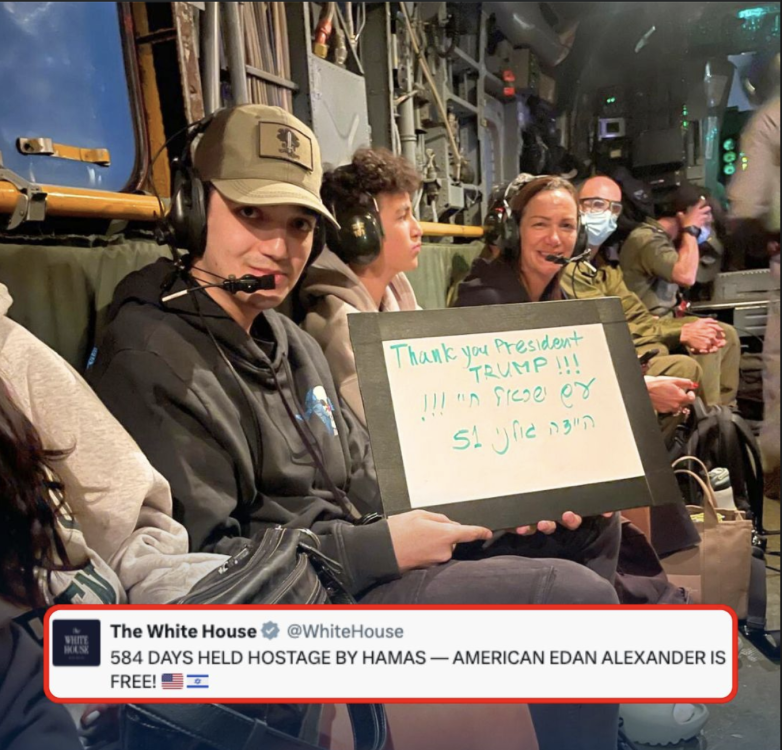Leaderboard
Popular Content
Showing content with the highest reputation on 05/13/2025 in Posts
-
5 points
-
I remember partying with Tripp when he was the CO out in Osan and we did a 3 or 4 week det from Iwakuni. He was up playing some of their songs on stage and one of our guys went to the bathroom, wrapped himself in toilet paper, then lit himself on fire. He ran out, slid across the bar and we all threw pitchers of beer on him to put it out. We called it a "flaming carrier qual." Tripp stopped playing, said "Never has another squadron come into our O'Club and taken it over. This is your place tonight guys!" Hell of a night.3 points
-
At bare minimum it'd be easy to say to the pharmaceutical companies they cannot charge the US more than the lowest price they sell their drug for in any other country. Not a price control. Just a balancing of the scales and an evening out of the "markets." Wanna sell your drug for .15/pill in Zimbabwe? Cool with us. That's our price too. The differential price structure is what's fucked. It allows triangulation of the American taxpayer via the mechanism of Medicare, Medicade, and all our other socialized healthcare. I get to work everyday and pay a lot of taxes at the threat of gunpoint for the privilege of lining these massive drug companies' pockets so they can deliver "healthcare." If anyone thought this was a free market, they were consuming mushrooms.3 points
-
The money that flows through that line of business is disgusting. Why do the sales people need to visit doctors and drop off all sorts of swag to incentivize them to prescribe said drugs. How about doctors honor the Hippocratic oath and simply do what is best for their patients.2 points
-
2 points
-
Well, it should be about getting more focused on fighting and winning wars. If your position is ONLY stateside, it’s worth considering that you shouldn’t wear a uniform. It’s not about saving money, it’s about focus. Our culture has been diluted by trying to accommodate 50+ sub-cultures. Leaders that never left the wire (or never deployed) are now making decisions for those who will. We need to make it so that when you look at a uniform-wearer you know you’re looking at someone whose purpose is to put their pink body on the line. That might also mean that not everyone gets their own squadrons anymore. Embed uniformed support personnel in the warfighting squadrons under the warfighting commanders (…what’s old is new). Yeah, the culture will change, but if it is not illegal, immoral, or unethical, and doesn’t degrade readiness, then get out of the way. Put it to the warfighters to hash out and decide final solutions. Then execute. Maybe? If the capacity is focused on warfighting, then don’t do that. It’s most important that we think about what a truly optimal force looks like - either gutting or adding. Maybe not. But let’s not think about staffing pork barrel garden spots. Then, for the jobs we do need let’s assume we pay them dollars on the dollar. Let’s start with what we need to win wars. I get that what we will have to go head to head with entrenched bureaucracy and jobs programs… but that’s step two. Then don’t. We need to stop playing to lose and restructure around what we have to win. Then don’t. Pay them O-4/O-5 pay. Pay organizational leaders bonuses proportional to the size of the organizations they lead. I understand the chip and anger at what the DOD has failed to do in the past, or whatever hidden agendas there might have been previously, but we have to get past that, because we’ve got some serious shit to focus on. Back to fighting wars and staffing warfighting organizations with warfighters. Focus. Shut it down. Move the Aircrew Task Force out from the DAF and make it a direct report to Congress. Staff it with Iron Majors if need-be. If they can’t perform, let them fail. Change management. We’re here to win. I think that was the original point.2 points
-
Yeah, we took our First Sergeant (medical I believe) to an Ex with a stop in Pattaya. Dinner on the outskirts of walking street - she about had a heart attack. This was after her perplexity that we didn’t use rank on the airplane. Truly different worlds we live in. Flight doc though? Took a shower in the airline club.2 points
-
2 points
-
If they are going to set the price of the drug, that's bad. Price controls are never a good thing. But if they are going to establish rules by which pricing must be fair across trading partners, that's an entirely different thing altogether. This is a perfect example of how other countries take advantage of the United States by methods other than tariffs. We don't participate in the same sort of fuck fuck games, so using tariffs as a retaliation are a simple way to make the problem go away.2 points
-
Here's what we do:. We set up prisons with safe areas on each corner of the UTTR or Nellis ranges and wall the entire range in. Get old military vehicles, clunkers, whatever and we handcuff these twisted humans into a vehicle with the assignment of driving to the opposite safe area during the day/night. If the dirtbag makes it, he lives to drive another day. If not, well, think of the great training provided to his/her former fellow warriors.1 point
-
I'd like to fuck that dude up. I can't wait for him to shed tears when he loses his freedom for jerking off to his step daughter taking a shit. Take him to altitude and kick him out without a parachute. Edit: Or drop him off at UTTR and have the boys let loose on him in the range.1 point
-
1 point
-
I will be forever baffled by dudes who get off on secret footage of women doing routine non-sexual activity in various stages of undress, and forever grateful that I don't have whatever brain defect creates that kink.1 point
-
Why would Israel do that? When you have terrorist living football fields away from your citizens you don’t just tuck tail.1 point
-
Changing Big Pharma is like moving the moon. From firsthand experience, the money and lobby influence pharma has, it gets the job done, and it ain't changing anytime soon. Trump can try all he wants, they'll maneuver and still come out on top. Me, I'd start with banning all drug commercials. And then fuck with their execs, taxes, etc.1 point
-
Shiiitttt, this guy hasn’t been TDY almost anywhere. He’d have an aneurism if he went to SE Asia or Eastern Europe.1 point
-
1 point
-
Come on brother...you are smart and there are better ways to make an actual point about economic policy. Think critically...this is a FAR more complicated issue than Communist price control. This is more about trade and ending a sweet heart deal the Pharmaceutical industry has had for FAR too long. It is not a free market when the rest of the world limits the price and the only "free" market is in the U.S. The United States represents 4% of the world's population but we generate 66% of the profit in the pharmaceutical industry. The high price of new drugs has always been falsely explained as the cost of research...true or not it is now time for the rest of the world to share in that development cost.1 point
-
I hope the maintainer hangs that LOR proudly on his wall. And to the guy who wrote it, you’re a douche.1 point
-
A bit more color from someone who spent a LOT of time around that environment...including as an exec for the Deputy Chief of Staff. Not suggesting it is a personal chauffeur but home to work was the norm when I was there and especially in places like DC it is a HUGE deal, especially with the parking and special security lanes. Also, moving around DC while the rest of us use the METRO. Ironically, I once Slugged with a dude and when we got to the Pentagon drop off area he asked if I worked in the building...I replied yes and showed him my badge. He said stay with me I have decent parking. We went through security, zipped past south parking and down pat the memorial and corridor five where all the 3-4 starts had their cars parked. I got real nervous when we turned the corner and he drove up the ramp and parked in the second spot by the Mall Entrance...unbeknownst to me I just rode to work with the DEPSECDEF who insisted on driving himself. I was trying to replay the conversation in my head because he was asking me questions all the way down 395. The "assist" with entertaining is the most abused part of the program. "International agreements with world leaders and senior partners" is absolutely comical. At least half the time they are hosting old friends who happen to work in industry. I never once saw a"world leader" but I saw a lot of old bros coming over for dinner and drinks. You forgot to add the USAF is sending these assistants to culinary schools...usually private ones. When I was an exec the boss' were swapping out and the new guy decided the interview of his new in-home assistant was a test case hosting a party for other senior leaders. That prep included mowing the Senior GO's lawn...by the way, the interviewee was pregnant. That was a defining moment when I knew I didn't want to be a GO. You forgot the execs and enlisted assistants that DO personal stuff like dry cleaning, uniform setup, going to get breakfast and lunch...I used to fill out birthday cards (I know because I got yelled at for one misspelled word in a stack of 53 cards). Same docs or not as you note they have a special place and process that they get to use even when RETIRED. They don't wait for appointments and why do they need more privacy than HIPAA provides the rest of us. My first boss had some medical issues, I could call the GO office at Walter Reed or the In-Pentagon Flight Doc and get him in within the hour. C-21s and other aircraft for the 1-3 stars...white caps for the 4 stars. Being a GO is hard work with long hours but I don't feel sorry for them one bit.1 point
-
Just to color in some balance: They get sedans, and sometimes drivers for official business only. Home-to-work use and vice versa is very rare, and usually not allowed; and personal use and stops are prohibited. They don’t get a round-the-clock chauffeur. GOs that occupy Flag Quarters get aides who assist with official entertaining required by their position. Think folks that set the table and make the food when discussing international agreements with world leaders and senior partners. At the end of the night they go home. Personal services are prohibited. There is no special healthcare plan. In some busy locations (Walter Reed, etc) there are separate areas or appointment processes that help them get seen to take care of issues (or avoid getting seen by the masses for privacy concerns), but they use the same docs and TRICARE plans. You’re right about the pay - the FY2015 capped their pay and retirement. I agree that we need less GOs, and propose less officers overall, but in a more streamlined organization. Here’s what our new friend has to say: Trim the Brass, Sharpen the Spear A wartime-ready blueprint to realign America’s officer corps The U.S. military’s command structure is misaligned with the demands of modern war. The senior officer corps has grown too large relative to the force it leads, distorting spans of control, inflating headquarters, and diluting accountability. We propose a deliberate reduction of general and flag officers from 525 to approximately 350 by FY33, accompanied by a targeted drawdown and restructuring of the broader officer corps. This reform restores wartime focus, reduces decision latency, and enables a more credible, combat-aligned military architecture. The goal is not austerity. It is clarity. The reduction preserves surge capacity, strengthens the operational core, and ensures that uniformed officers serve only where their presence is essential—to command forces, make lethal decisions, or operate under military law. Responsibilities misaligned with those functions—acquisition oversight, installation management, enterprise support—shift to civilians or warrant officers, freeing uniformed talent for operational and combat roles. Rebuilding the Structure for What Comes Next This is not the first time the military has confronted institutional overgrowth. But the nature of this moment is unique: dispersed operations, data-saturated environments, hypersonic timelines, and adversaries that prize speed over scale. It is no longer just inefficient to carry excess headquarters—it is operationally dangerous. To correct course, five principles guide the proposed change: Combat first. Uniformed officers remain where lethal authority, command in battle, or military justice are inherent to the role. Surge capacity preserved. A ready bench of one- and two-star Reserve general officers ensures rapid reinforcement without sustaining unnecessary peacetime overhead. No ornamental billets. Positions that exist for convenience, tradition, or administrative overreach—whether in program offices, family services, or base-level operations—are subject to reassignment or elimination. Every cut validated. Billets are reviewed against theater contingency plans and operational requirements. If it’s needed in war, it stays. If not, it goes. Span of control restored. The target is 1 general or admiral for every 4,000 active-duty service members, supported by a flexible, civilian-heavy institutional base. A Three-Phase Reduction Phase I (FY25–FY27): A freeze on new general and flag officer billets. Retirements and unfilled vacancies begin reducing staff layering across major headquarters. Redundant deputy directorates, overlapping support roles, and administrative excess are trimmed. Estimated reduction: ~10%. Phase II (FY28–FY30): Major consolidation follows. NORTHCOM and NORAD merge into a unified Homeland Defense Command. Navy and Marine Corps departmental headquarters unify under a Maritime Service Secretariat, while operational independence remains intact. Base and installation commanders shift to senior civilian leadership. The Defense Health Agency is streamlined. Spans of control increase meaningfully. Cumulative reduction: ~25%. Phase III (FY31–FY33): Key defense support agencies (DIA, NGA, DTRA, NRO, DISA) transition to civilian SES leadership with uniformed deputies. A new statutory cap of ~350 general and flag officers is established in Title 10, with annual oversight mechanisms to enforce compliance. The Reserve flag pool is formalized and resourced. Final span of control: ~4,000:1. A Promotion System Built for Relevance A smaller senior corps must be matched by a promotion system that recognizes functional need over structural inertia. The following reforms address that reality: Parallel career tracks. Officers will declare either a command track—focused on leading units—or a technical track, optimized for fields like cyber operations, AI, logistics, or advanced sensing. Technical officers may culminate in O-6 “Senior Specialist” billets with appropriate incentives. Up-or-stay. Officers who are not selected for promotion may continue serving if they fill high-need roles. Career progression is no longer tied solely to upward movement. Demand-informed boards. Promotion and continuation boards will use real-time Talent Marketplace data to gauge where officer demand exists, ensuring advancement reflects operational value. Lateral entry and reentry. Officers with critical skills from outside government, or those returning from academic or industry sabbaticals, can enter or reenter service without being penalized by traditional career timing. This modernized system ensures that officers are advanced, retained, or reassigned based on what they contribute—not simply how long they’ve served or how many boxes they’ve checked. Where Uniforms Are No Longer Required Reform is not just about removing billets. It’s about putting the right people in the right roles. Uniformed officers belong where warfighting, military authority, and combat decision-making are required. Elsewhere, stability and expertise often matter more. Installation and community support. Garrison and base leadership transitions to civilian SES or GS-15 professionals, supported by uniformed deputies where appropriate. Enterprise logistics and acquisition. Approximately 1,400 officer billets—especially in procurement, lifecycle management, and depot oversight—shift to civilians or warrant officers. Deployable contracting and sustainment teams remain uniformed. Medical and training institutions. Around 200 field-grade billets at military hospitals, schools, and non-operational centers are transitioned to civilian or warrant roles. Policy and analysis roles. Legislative affairs, public affairs, and long-term policy planning roles that are often filled by staff officers will instead be civilianized to preserve institutional knowledge and reduce rotational disruption. The result is not less capacity—it is more relevant capacity, matched to the function it serves. Risk Is Not Assumed—It’s Managed Forward capability is retained. Military contracting, legal, and finance personnel remain embedded in operational formations. The surge bench is real. Twenty Reserve general and flag officers are maintained, trained, and aligned to COCOMs for rapid activation. Reform is incremental. No mass firings. Reductions are phased in through retirements, billet realignment, and voluntary civilian transition. Every change is rehearsed. Reforms are tested in wargames and planning scenarios. If the billet supports combat power under pressure, it survives. The Force in FY33 General/Flag Officers: 525 → ~350 (−33%) Total Commissioned Officers: 234,000 → ~196,000 (−16%) Span of Control (Flag Officers): 1:1,600 → 1:4,000 Annual Overhead Reduction: ≈ $1 billion; 30,000 fewer PCS moves Decision Latency: Cut by half; command chains shortened from six to three echelons Retention: Technical and tactical experts retained; command-track officers promoted on merit Surge Resilience: Maintained through Reserve flag pool and SES institutional continuity Structure is Strategy The current officer corps was not built for speed. It was built for routine—career patterns, headquarters comfort, and institutional self-preservation. But adversaries do not calibrate to our bureaucracy. They calibrate to our weakest link. If the structure that governs our people, decisions, and actions is bloated or misaligned, the rest of the force cannot compensate for it. This proposal is not about doing more with less. It is about doing better with purpose. It realigns billets to functions. It reduces friction where decisions matter. It builds incentives that reflect today’s needs, not yesterday’s promotions. And it preserves both readiness and resilience. A smaller, faster, more operationally aligned officer corps is not a luxury. It’s the bare minimum for a military preparing to fight at speed and scale against modern threats. By FY33, the United States can—and should—field an officer corps in which every rank, every billet, and every staff function supports the central purpose of the profession: winning in war. That requires sharper tools, not more of them.1 point
-
1 point
-
Or landed mistakenly on the taxiway at Balad on NVGs. I remember that tower call when we were about to land #2. Nice job guys, just taxi straight ahead to park. Doh!1 point
-
This reminds me of a few experiences (absolute fucking retards) in my AF career0 points
-
*yawn* That sophist nonsense again? cool I'll play. Sorry about the GO thread derail: This isn't about generals, this is a larger austerity project than the author intimates. Yeah I see you (the royal you). I've heard that pitch at least 3 times before in my career as an AFRC baby. It's the same ol song and dance that if your position is primarily stateside, you shouldn't wear a uniform. And I got the same retort I've always had for these doublespeaking austerity hawks: FUPM. That expeditionary force myopia is not suprising, given this admin is the party of FAFO, but you're assaulting/gutting your Reserve component capacity with that kind of deployment-supremacist view. More to the regAF point, wildly overestimating the degree of active duty retention you think you have by attempting to extend that COA into AD end strength. Typical FAFO hubris from the "I won't be here when the grenade goes off" dum dum Willie types. To say nothing of AD largesee for me but not for thee run amok. Matters not. You think you can operationally staff DOD congressional pork barrel economy garden spots with 60 cents on the dollar 'local' blue suiters? Go right ahead, let me run to the microwave real quick and get the corn bag. Fact is nobody with a scintilla of existing corporate continuity/tactical expertise is going to do this job beyond the journeyman level (get the civilian transferable training and immediately bounce, brain drain jobs program) in present circumstances as an ART equivalent or worse, no military code GS, when they have to punch out of that 1960s decaying empire Boeing-betrayed POS. No buck no buck rogers homey. And there's a hell of a lot more to that buck than W2 wages. Serious people recognize than nuance, unserious austerity clowns don't. This not conjecture, they cannot staff ART billets to save their lives even if you threw in a free Oprah car with it. They gutted FERS with that multiplier nonsense (1.0 vs 2.5 or even 1.7 for LEO, good grief, and a 4.4 fee since '14 as of last reading), pushed the sunsetting of ART Tricare ineligibilily to FY30 (a fucking theft, when no such imposition is made of retirees who go straight GS employees). And you want to backstop your baseline regAF capacity with that kind of retail level turnover job offers? lulz. It's also the same reason you're not going to retain talent by trying to send career tactical experts (aka technicians, in the occupational meaning of the word) to warrant payscales. That's not a programmatic quip either, they're not doing that to end up paying operators *O(SP)-4/5 money to do the job. (*that's my ficitious O-4/5 equivalent to the ARMY exintct specialist SP tables, non-commanding track, latter which my late English-illiterate grandfather retired from the army in 1966). The point of their COA is the paycut. FAFO. The level of myopia in that austerity pitch is wild. It's all good though, we already got IPT early exit polls in AETC already brewing a real sweet track record on the FAFO front. Add some Boeing malfeasance on the T-7 side and you got yourself a real boondoggle. I could tell y'all what Boeing plans to do to meet IOC contract legalities this summer, but I'd straight up doxx myself at this point and betray the confidence of my sources, so I'm gonna digress. DOD management (leaders they are not) is starting to show their arsecrack once again when they bend over to pick up pennies while walking over dollars. Now back to GO officer drawdown kabuki theater potato.0 points















